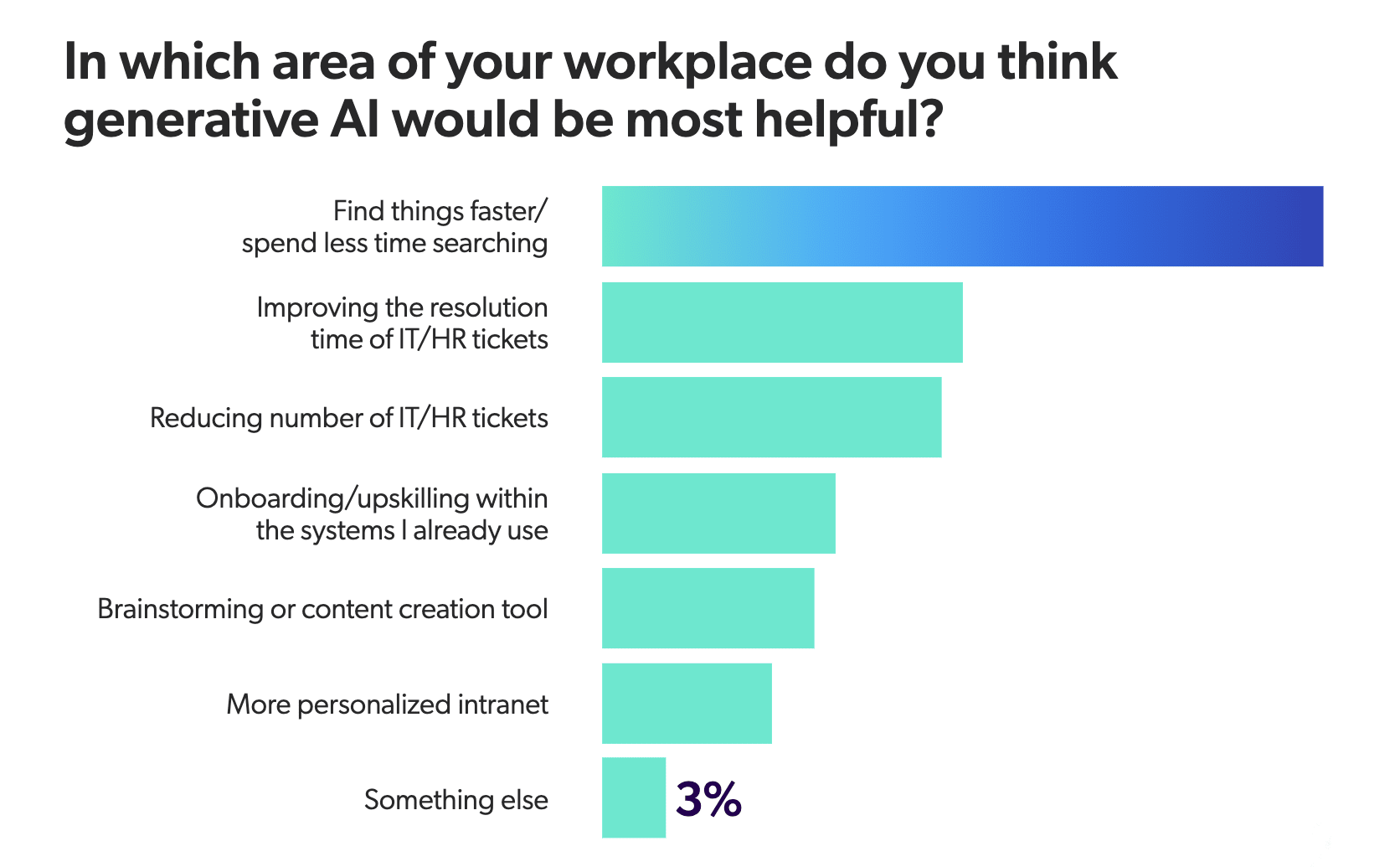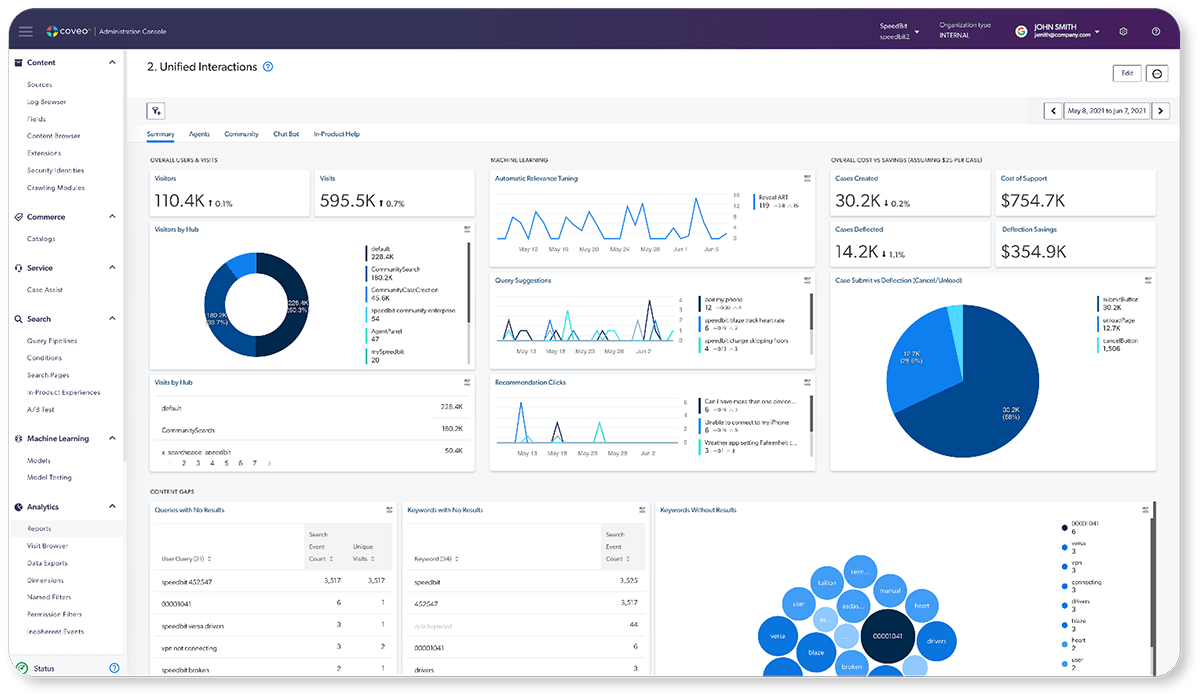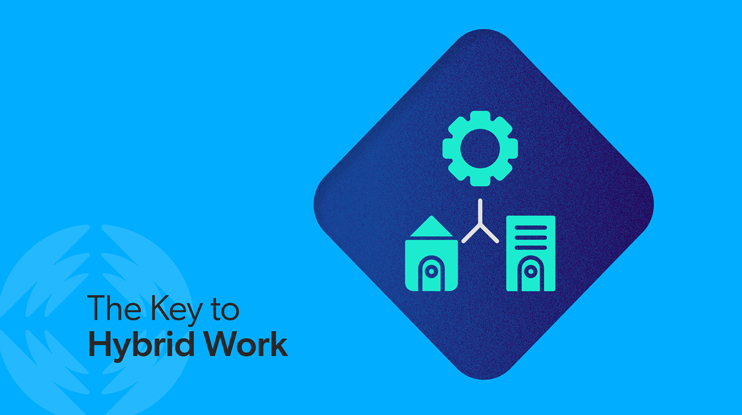Does your hybrid workplace technology help or hinder your employees?
It’s pretty clear that the hybrid workplace model – aka flexible work – is here to stay. According to a 2023 McKinsey study, around 10% of global workers would quit their jobs if required to return to an in-office arrangement every day.
The problem is many hybrid model infrastructure and tech decisions to support a remote workforce were cobbled together out of haste during the pandemic. According to an Adobe survey, nearly 70% of respondents said their managers don’t provide them with the right technologies to do their work effectively. Even worse, over a third (34%) felt frustrated or burnt out by this challenge.

And workplaces are responding. Global sales from collaboration software tools like Slack or Microsoft Teams have exploded, reaching more than $16.1 billion in 2022. It’s expected to grow to almost $53 billion by 2032.
However, rolling in more touchpoints isn’t the answer to connecting hybrid workers. In fact, the sheer number of digital workplace apps and systems is leading to information overload, low employee satisfaction and burnout.
Instead, the answer is unified search.
Burnout & Context Switching: Enemies of Hybrid Productivity
In March 2020, many employers folded new hybrid workplace technology into their digital workplaces in an attempt to maintain connections between employees across a suddenly homebound workforce.
For some hybrid workers, this meant shifting to cloud-based storage systems or new software like Slack or Microsoft Teams. Other organizations might have avoided adjusting their technology altogether, leaning on existing intranets or knowledge hubs.
Unfortunately, this Band-Aid approach to information and collaboration isn’t much of a long-term solution. Just think about it: how many times a day do employees switch back and forth between tabs, browsers, screens, emails, and applications? Combine this with everyday distractions like doorbells, kids, pets, and other interruptions, and you can see why it’s hard to maintain employee engagement, let alone job satisfaction.
Aside from the emotional drag, context switching also has a tangible effect on our ability to work quickly, accurately, and proficiently; each added touchpoint or activity causes a 20% loss in productivity.
According to a 2023 Salesforce study, sales teams waste 70% of their time doing everything but sales. And based on our own research, 40% of customer service professionals consider generative AI tools as a solution to finding what they need quickly so they can get back to helping customers.

So what do you do?
Keep Employees in the Flow of Work With Hybrid Workplace Technology
To resolve this issue, scrap any idea of having to overhaul your existing tech stack. You can keep your apps and systems — after all, these are what your employees are already used to.
Instead, use an AI search platform that unifies these disparate systems, centralizes information, and incorporates artificial intelligence (AI) to effectively streamline your hybrid workplace.
It sounds like a big undertaking, and it is. To help you strategize what unified search adoption for your company, we’ve provided the steps involved to make that transition.
1. Centralize Enterprise Knowledge
You probably have a treasure trove of existing information within your organization, but it’s largely wasted if your employees can’t find what they need. Most medium and large organizations struggle with data management issues like multiple document versions, lack of naming conventions, storage of documents on personal computers, and disparate methods of file sharing like Dropbox, Google Drive, or WeTransfer.
Connecting content repositories to a central location using a relevance platform breaks down location-based or department-based silos, making all of that information accessible to employees anywhere, any time.
Another benefit of unifying enterprise knowledge is the possibility and potential of the Intelligent Swarming℠ framework*. It’s a framework for an extremely integrated form of organization-wide collaboration that crosses teams and departments, allowing employees to search for and find the person most likely to be able to resolve their request or provide the information they need.
The ability to index conversations is critical as hybrid working moves from collaboration in meeting rooms and over cubicle walls to digital messaging services. Traditional search makes this difficult, however, because of the way conversations are structured — often peppered with short responses, emojis, links, and attachments. One message on its own rarely provides any value.Unified enterprise search is a great way to foster Intelligent Swarming because it allows the inclusion of chat messages through the indexing of collaboration tools like Slack or Jira. This presents a whole new type of searchable content where employees can understand the context of more informal discussions and obtain the information they need.
2. Leveraging AI to Improve Discovery
Once all of your enterprise knowledge is accessible from one place, give remote employees an information boost with in-session personalization. Because they’re inside apps and systems they use daily, your employees are already authenticated users. They reveal preferences and habits when moving from one piece of information to another.
By taking into account every action an authenticated user performs on a site, the AI model learns what works and what doesn’t in relation to different queries and searchers. The goal is to figure out the user’s intent quickly and guide them to their desired results as smoothly as possible.
A system that simply spits out a list of all the tickets from the last six months in response to the query “customer issues,” forcing the team member to narrow down hundreds of results, provides neither a positive nor a useful employee experience. But with predictive text, discovery tags, and user clusters, hybrid employees could be presented with relevant answers in seconds.
For example, if an employee works in product testing and then types “customer feedback” into a query box, the system already knows they are likely looking for recent error tickets. A sales agent who types in an identical query might be presented with reports from the business development team.
3. Implementing Continual Improvement with Analytics
Employees are constantly adapting, learning, and changing behavior. Smart analysis tools like Coveo Usage Analytics capture and store data about every query, question, and click, providing a roadmap for improvement in line with the needs of your hybrid team. This data also feeds AI algorithms to provide a more intuitive and personalized work experience.
For example, one of the biggest challenges of transitioning to remote and hybrid work has been the loss of the human experience: being able to drop by a coworker’s desk to ask a question, or get a group together to go out for lunch.
Onboarding, in particular, is a sensitive stage of the employee journey that is tougher to accomplish well for a distributed company. A hybrid workplace technology that leverages powerful search analytics allows you to learn what your employees need most and incorporate those insights into your onboarding, upskilling, and training strategies.
You also learn to identify the ‘moments that matter’ for your employees, and can create more human experiences around those.

Build the Connected, Hybrid Workplace of the Future
Ultimately, many enterprises might find that their tech stack needs to be better connected — rather than expanded — to accommodate an increasingly hybrid workforce.
With a unified approach, you can empower your employees to do their best work, no matter if they’re in the office or at home. You can even bring the search experience directly into their daily apps and systems with a solution like Coveo In-Product Experiences.
After all, even though remote employees are spread across the country or even the world, connectivity is what keeps everyone working toward the same goal.
Dig Deeper
Now that you know unified search is an option for connecting your workforce, find out how you should evaluate options on the market with our How to Choose the Best Enterprise Search Solution.
*Intelligent Swarming℠ is a service mark of the Consortium for Service Innovation™.


